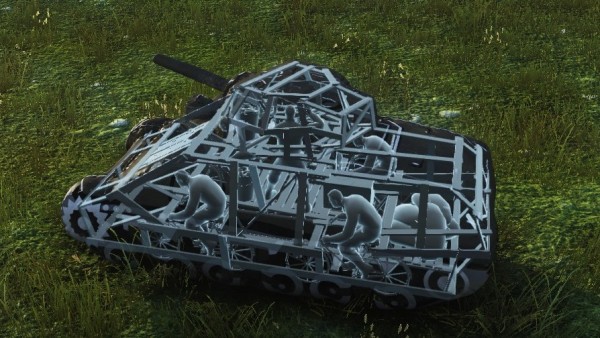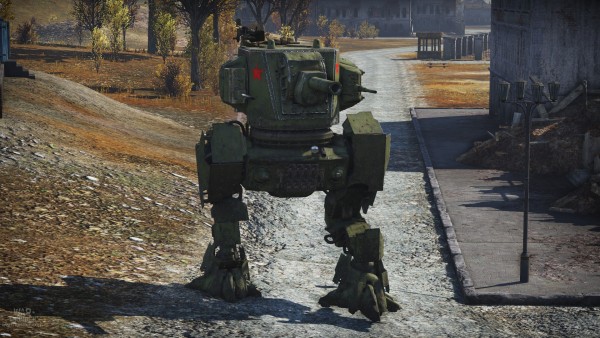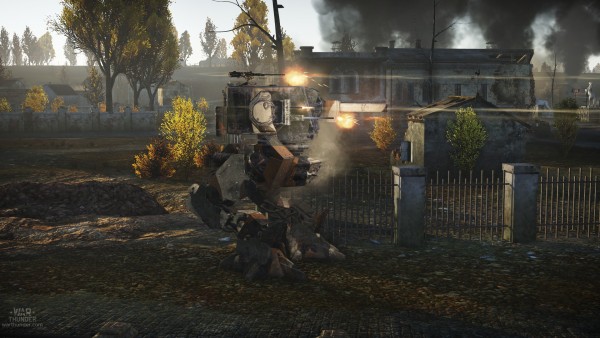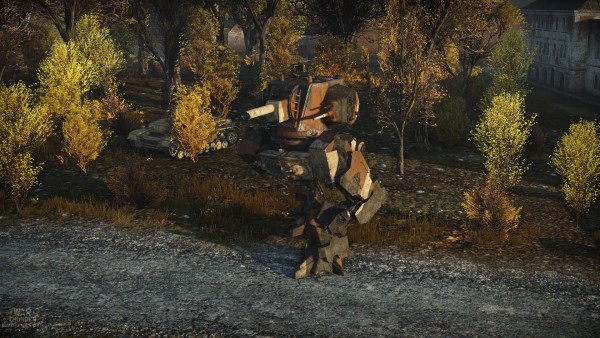USA: AD-2, Skyraider, P-51D-10, P-51A
Spad: pretty nippy, lots of bombs, BR 6.7 might hurt it. P-51(A?),
USSR: Yak-9M, Il-2 1943, IL-28 (Cockpit), Yak-9T and Yak-9K (new models), IL-2 1942, IL-2M AM-38 1943, Dolgushin’s La-7
Germany: Ar.234 C3, Hs.129 (cockpit), Bf-109B
Britain: FireFly F.Mk.I, FireFly F.Mk.V, Seafire Mk.XVII, Seafire FR.47, Sea Fury FB.11, Attacker FB.1, Canberra (cockpit), Sea Gladiator Mk1, Sea Hurricane Mk.Ib, Sea Hurricane Mk.Ic, Plagis’s
Spitfire LF. Mk.IX, Prendergast’s Spitfire FR.MK.XIVe
Japan: J2M2, Ki-21
Hawker Nimrod Mk. I and II
A naval development of the Hawker Fury, the Nimrod served as a fighter with the FAA for most of the 1930s. Retired from front-line service shortly before the war, a handful of Nimrods were still in use in 1939, but saw no combat.
The Nimrods are standard starter aircraft in War Thunder; the Mk. II used to be a reserve aircraft, before reserves were slimmed down to three per country, and returns to the FAA line in 1.70.
Gloster Sea Gladiator Mk. I
The Sea Gladiator was, unsurprisingly, a naval version of the Gladiator with an arrestor hook and catapult points. With more modern types being delayed, the Navy procured a batch of Sea Gladiators to replace older Nimrods and Ospreys just before the war. They flew in the Norwegian campaign, and famously (“Faith”, “Hope” and “Charity”) from Malta.
The Sea Gladiator, along with the regular Mk. II and Tuck’s premium version, pads out a Tier I Arcade line-up for new British players, but apart from that is just a stepping stone to the rest of the FAA tree.
Hawker Sea Hurricane Mk. IB
Desperate for modern fighters, a naval version of the stable and rugged Hurricane was an obvious option for the FAA, but with the Battle of Britain raging, airframes were not available for conversion until 1941. The first Sea Hurricane, the Mk. IA or “Hurricat”, was launched by catapult from Navy Fighter Catapult Ships (FCS) or Catapult Armed Merchantmen (CAM). The Sea Hurricane Mk. IB was a more conventional carrier aircraft, with catapult spools and an arrestor hook, converted from a motley assortment of ex-RAF aircraft. Sea Hurricanes were heavily involved in the convoys to resupply Malta during the Mediterranean campaign, and also flew from small escort carriers to cover other convoys such as on the Arctic routes to Russia.
The Sea Hurricane Mk. IB has similar performance to the regular Hurricane Mk. I (note: check tiers, BR?), giving British Arcade players a useful addition to an early Tier II line-up.
Hawker Sea Hurricane Mk. IC
The Mk. IC differed from the Mk. IB in mounting four 20 mm Hispano cannon instead of eight .303 machine guns, a very useful extra punch, especially against bombers. ‘Dickie’ Cork of 880 Squadron was credited with five kills in a single day flying a Sea Hurricane Mk. IC during Operation Pedestal in 1942.
The Mk. IC is a rather exciting prospect in War Thunder, the first cannon-equipped Hurricane to appear in the game, with the same heavy firepower as the Beaufighter Mk. VIC but greater manoeuvrability. Lacking speed, it probably won’t be best suited to Realistic mode, but should be an absolute beast in Arcade at Battle Rating 3.
Fairey Firefly F Mk. I
The often overlooked Fairey Fulmar gave sterling service to the FAA in the early years of the war. A long-range two-seat fleet fighter, the Fulmar was a hastily procured stop-gap solution while its successor, the Griffon-powered Fairey Firefly, was in development. Similar in appearance to the Fulmar, the Firefly entered service in 1943. An interesting feature of the Firefly was its Youngman retractable aerofoil flaps, allowing for efficient cruising and easier deck landing. A hefty aircraft, as heavy as a Blenheim bomber, the Firefly could not compete as a pure fighter with lighter land-based equivalents, but its versatility allowed it to fulfil multiple roles, taking part in strike operations with the British Pacific Fleet towards the end of the war.
Slower than most fighters of a similar Battle Rating, the Firefly works best as a fighter-bomber in War Thunder, with a good range of ordnance to use against ground targets. The Firefly is surprisingly manoeuvrable for a heavy two-seater; take some time to admire the modelling of the flaps, if you’re not frantically deploying them to avoid incoming fire. The combination of manoeuvrability and heavy cannon armament are particularly suited to Arcade battles.
Fairey Firefly FR Mk. V
Successful enough to be further developed in post-war service, the Firefly FR Mk. V fitted a larger Griffon engine, with the oil cooler moved from the chin to the wing roots. Several squadrons of Fireflies took part in the Korean war, mostly with the FR Mk. V, flying armed reconnaissance and ground attack missions.
In War Thunder the Mk. V is quite similar to the Mk. I; although noticeably quicker, the commensurate increase in Battle Rating still leaves it at a disadvantage compared to its rivals.
Seafire Mk. XVII
The potential of the Spitfire was obvious as it came into service, and the Admiralty soon expressed interest in a navalised version, but no production capacity could be spared. By 1941 the FAA’s need for a high-performance fighter was acute, the Fulmar and Hurricane increasingly outmatched, and the Sea Spitfire (soon shortened to Seafire) was finally ordered. The Seafire Mk. IB was a hasty adaptation from the Spitfire Mk. VB, the Seafire Mk. IIC from the Mk. VC, then the Seafire Mk. III was a more thorough naval conversion with folding wings.
After the Mk. III, Seafire variants were assigned numbers along with the Spitfire, so the next was the Seafire Mk. XV, combining the Griffon VI engine used on the Spitfire Mk. XII with a navalised airframe. The Mk. XVII was similar, with a teardrop hood.
The Mk. XVII we have in War Thunder is quite similar to the early Griffon Spitfires, but optimised for low level performance. (BR?)
Seafire FR 47
The final Seafire variants, Mk. 46 and 47, were developed from the Spitfire Mk. 22. Along with the usual naval modifications of an arrestor hook, folding wings etc., the most striking thing about the ultimate Seafires was the use of contra-rotating propellers, negating the powerful torque of late Griffon engines, making handling on a carrier easier.
The FR 47 in War Thunder is very similar to the Spitfire 22/24 (check BRs etc again)
Sea Fury FB 11
As the war drew to a close, Hawker were developing a lighter version of the Tempest for both the RAF and Navy as the Fury and Sea Fury. With jet aircraft entering service and large stocks of Spitfires and Tempests, the RAF saw no need for a new type and cancelled their order, but the Seafire was not an ideal carrier aircraft so the Navy proceeded with the Sea Fury as a replacement. The FAA’s last prop fighter, the Sea Fury had excellent performance, serving into the 1950s before being replaced by jets.
In War Thunder, bit like a Tempest II, though faster with lower BR.
Attacker FB 1
The Supermarine Attacker was the FAA’s first jet aircraft. Attempts to update the Spitfire had resulted in the Spiteful and naval Seafang, elements of which were adapted for jet propulsion as the Attacker. An undistinguished fighter, the Attacker was only with front-line squadrons for a few years and saw no combat.
In War Thunder (something something early jet, similar to first Meteor/Vampire?)
History of the Fleet Air Arm to 1939
The First World War saw an extraordinary transformation of military aviation. In the United Kingdom, at the start of war the Royal Flying Corps (RFC) and Royal Naval Air Service possessed a handful of airships and rickety aeroplanes, largely intended for reconnaissance, still viewed with deep suspicion in some quarters (the Admiralty, in 1907, were of the opinion that aeroplanes “would not be of any practical use to the Naval Service”; the Army, in 1910, thought aviation “a useless and expensive fad”). By 1918, the RFC and RNAS mustered thousands of aircraft engaged in missions including photographic reconnaissance, gunnery spotting, strategic bombing, anti-submarine and anti-ship strikes, air defence and ground attack.
The parallel development of Army and Navy aviation resulted in overlap between the services, duplication of effort, and competition for aircraft and engines. German bombing of England, particularly the Gotha raids of 1917, brought criticism of the government over ineffective air defences and calls for reprisal, leading to two reports from General Jan Smuts on air defence and the strategic employment of airpower. Smuts recommended the formation of an independent air force, the Cabinet accepted the recommendation, and on April 1st 1918 the Royal Flying Corps and Royal Naval Air Service amalgamated to form the Royal Air Force.
In the years immediately following the First World War the War Office and Admiralty sought to regain control of army co-operation and naval aircraft, but as the nation demobilised and defence spending was slashed, the RAF feared for its continued existence and fiercely resisted, retaining control of all military aviation.
The Royal Navy were at the forefront of aircraft carrier development during and after the First World War as the now familiar “flat top” evolved from earlier seaplane carriers, commissioning HMS Argus in 1918 (the first ship with a flat full-length flight deck), and HMS Hermes in 1924 (one of the first purpose-designed aircraft carriers). Though the Navy operated the carriers, the Air Force were responsible for the aircraft that flew from them, a particular point of friction in the ongoing inter-service rivalry, partially resolved by the creation in 1924 of the Fleet Air Arm of the Royal Air Force to cover carrier aviation. Only 30% of carrier aircrew would be RAF officers, the remaining 70% being naval officers, though Navy pilots held a dual rank in both the RAF and RN, as only the RAF could fly!
Though the Admiralty lobbied for control, the Fleet Air Arm (FAA) continued to be part of the RAF, and naval aviation was a low priority for the Air Force. Financial issues and the global push for disarmament meant limited funds for procuring any new aircraft, and carrier-borne and maritime types were towards the bottom of the list. Further aircraft carrier development was limited, the United States and Japan taking over as leaders in that field.
Skirmishes continued between the Admiralty and Air Ministry, increasing in intensity as the international situation worsened, the prospect of war loomed and rearmament became a priority. A new cabinet post, Minister for Co-ordination of Defence, was created in 1936. The first incumbent, Sir Thomas Inskip, recommended that the Admiralty should have full operational and administrative control of the FAA, while the RAF should retain the shore-based maritime aircraft of Coastal Command. The recommendation was accepted in July 1937, but took until May 1939 to implement; technically the Fleet Air Arm became the Air Branch of the Royal Navy, but the name “Fleet Air Arm” remained in informal usage, and was officially re-adopted in 1953.
The political wrangling left the Fleet Air Arm in a parlous state at the start of the Second World War, with a shortage of modern aircraft and both air and ground crew. Nevertheless, the Fleet Air Arm served with distinction around the globe as it evolved into a modern and capable force over the course of the war.
Update 1.49 adds a full line of FAA fighters to War Thunder that illustrate that evolution, being involved in most of the key British naval campaigns of the war.
Hawker Nimrod Mk. I and II
A naval development of the Hawker Fury, the Nimrod served as a fighter with the FAA for most of the 1930s. Retired from front-line service shortly before the war, a handful of Nimrods were still in use for training in 1939, but saw no combat.
The Nimrod Mk. II used to be a British reserve aircraft in War Thunder, before reserves were slimmed down to three per country, and returns to the FAA line in 1.49. The Nimrods are fairly standard starter biplanes.
Gloster Sea Gladiator Mk. I
The Sea Gladiator was, unsurprisingly, a naval version of the Gladiator with an arrestor hook and catapult points. In the absence of more modern types, the Navy procured a batch of Sea Gladiators to replace older Nimrods and Ospreys just before the war. Sea Gladiators flew from HMS Glorious during the Norwegian campaign, and from HMS Eagle in the Mediterranean in 1940. Disembarked Sea Gladiators also flew from land bases in the Mediterranean, most famously Malta’s defenders “Faith”, “Hope” and “Charity” (actually six or more aircraft, originally of 802 Naval Air Squadron).
If you really like Gladiators, and have the three regular Gladiators (from way back in version 1.25 or before, when the Gladiator was the British reserve aircraft) plus the premium Tuck’s Gladiator, the Sea Gladiator offers an opportunity to expand that all-Gladiator lineup; apart from that it pads out Tier I a bit for Britain, but is mostly a stepping stone to later aircraft.
Hawker Sea Hurricane Mk. IB
Desperate for modern fighters, a naval version of the stable and rugged Hurricane was an obvious option for the FAA, but with the Battle of Britain raging, airframes were not available for conversion until 1941. The first Sea Hurricane, the Mk. IA or “Hurricat”, was a hasty modification to be launched by catapult from Navy Fighter Catapult Ships (FCS) or Catapult Armed Merchantmen (CAM) to drive away the long-range Focke-Wulf Fw 200s that shadowed convoys. With no landing platform, pilots had to make for land if possible, or bail out or ditch near a friendly ship after their flight. The Sea Hurricane Mk. IB was a more conventional carrier aircraft, with catapult spools and an arrestor hook, converted from a motley assortment of ex-RAF aircraft. Sea Hurricanes were heavily involved in the convoys to resupply Malta during the Mediterranean campaign, and also flew from small escort carriers to cover other convoy routes such as the Arctic routes to Russia.
The Sea Hurricane Mk. IB performs very similarly to the regular Hurricane Mk. I (note: check tiers, BR?), giving British Arcade players a useful addition to an early Tier II line-up.
Hawker Sea Hurricane Mk. IC
The Mk. IC differed from the Mk. IB in mounting four 20 mm Hispano cannon instead of eight .303 machine guns, a very useful extra punch, especially against bombers. ‘Dickie’ Cork of 880 Squadron was credited with five kills in a single day flying a Sea Hurricane Mk. IC during Operation Pedestal in 1942.
The Mk. IC is a rather exciting prospect in War Thunder, the first cannon-equipped Hurricane to appear in the game, with the same heavy firepower as the Beaufighter Mk. VIC but greater manoeuvrability. Lacking speed, it probably won’t be best suited to Realistic mode, but should be an absolute beast in Arcade at Battle Rating 3.
Fairey Firefly F Mk. I
The often overlooked Fairey Fulmar gave sterling service to the FAA in the early years of the war. A stop-gap solution to get a long-range fleet fighter into service, the Fulmar was a two-seat eight-gun fighter powered by a Merlin engine, the second crewman acting as an Observer/Navigator. Even before the Fulmar entered service its successor was on the drawing board, the Fairey Firefly. Similar in appearance to the Fulmar, but smaller, with a Griffon engine and heavier cannon armament, the Firefly entered service in 1943. An interesting feature of the Firefly was its Youngman retractable aerofoil flaps, allowing for efficient cruising and easier deck landing.
Though unable to compete as a pure fighter with lighter land-based equivalents, the Firefly was versatile, taking part in attacks on the Tirpitz in 1944 and operations with the British Pacific Fleet in 1945.
The Firefly will probably work best as a fighter-bomber in War Thunder, the range of ordnance it can carry being useful in Ground Strike Arcade matches. Slower than most at the same Battle Rating, the Firefly is surprisingly manoeuvrable for a hefty two-seater; take some time to admire the modelling of the flaps, if you’re not frantically deploying them to avoid incoming fire.
Fairey Firefly FR Mk. V
Successful enough to be further developed in post-war service, the Firefly FR Mk. V fitted a more powerful Griffon engine. Several squadrons of Fireflies took part in the Korean war, mostly with the FR Mk. V, flying armed reconnaissance and ground attack missions.
There isn’t too much difference between the two marks of Firefly in War Thunder; the additional speed and extra ordnance of the Mk. V are offset by the increase in Battle Rating.
Seafire Mk. XVII
As the Fleet Air Arm struggled
Seafire FR 47
Sea Fury FB 11
Attacker FB 1
Norway, 1940: Sea Gladiators, Skuas sink the German cruiser Königsberg
Med/Malta, 1940; Sea Gladiators (Faith, Hope, Charity). Reinforcement Hurricanes summer 1940.
Taranto, November 1940 (Swordfish)
Catapult ships; Hurricanes & Fulmars on RN Fighter Catapult ships, RAF Hurricanes (Hurricats) on Merchantmen. Launched against Fw 200s.
Med/Malta 1941/42, key point for intercepting Axis convoys to North Africa. Spitfire reinforcements and supply convoys.
Escort Carriers, Audacity (late ’41), Martlets
Norway, further ops
Operation Torch, November 42: Four fleet carriers with Martlets, Seafires, Fulmars, Albacores. Three escort carriers with Sea Hurricanes.
Med landings, Sicily, ’43. Seafires coming into service. Dragoon in ’44, fewer accidents.
Raiders: Bismarck (Swordfish) ’41, Channel Dash ’42
Arctic Convoys; Tirpitz
Swordfish MAC ships



